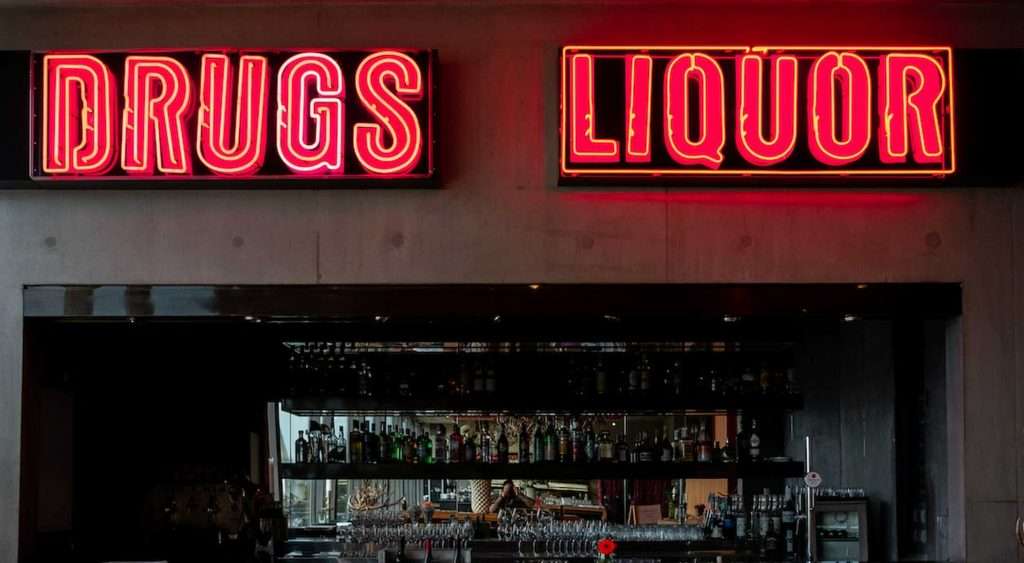Table of Contents
Many people believe that addiction is a choice. However, scientists and doctors now agree that addiction is a medical disorder. People addicted to substances can even receive a diagnosis of substance use disorder (SUD). The belief that substance is a choice likely comes from the fact that some users don’t get addicted. Yet, there are other factors that better explain this phenomenon. For example, some drugs are just more addictive than others. What is the most addictive drug, and how do people develop addictions in the first place? We want to explore the answers to these questions in this guide. Read on to learn more.
What Drugs Are the Most Addictive? The Top 10 Addictive Substances
A 2010 study investigated 20 drugs of abuse and ranked them according to their potential for harm. The researchers defined harm as either harm to individual users or harm to others.
Harm to users includes criteria like overdose, addiction, and impairment. Meanwhile, harm to others encompasses societal impacts like crime, economic burden, and interpersonal relationships.
Without further ado, here are the top 10 most harmful and addictive substances in the world. Read until the end because the number one spot may be surprising.
10. Benzodiazepines
The first drug on our list is prescription benzodiazepines (“benzos”). Benzos are depressants that doctors prescribe to treat anxiety disorders, sleep disorders, and seizures.
Despite their legality and medical benefits, people can become addicted to prescription benzos. This fact explains why researchers in the 2010 study ranked this drug high regarding harm to users.
The other category where benzos ranked high was for mental impairment. This drug can lead to confusion, coordination issues, and memory loss. Some users experience more severe side effects like hallucinations and aggression.
9. GHB
GHB is also known as gamma-hydroxybutyric acid. The Canadian Controlled Drugs and Substances Act categorizes it as a Schedule I drug. Schedule I drugs have a high potential for abuse and no accepted medical use.
This drug is relatively new. Some people use it by choice, but GHB is also known for its use as a date rape drug. Combining alcohol and GHB can lead to blackouts.
Compared to other drugs in the 2010 study, GHB has a low potential for harm to society. The majority of its harm is to the user. More specifically, GHB is highly impairing and presents a significant risk of addiction and overdose.
8. Cannabis
21% of Canadians use cannabis at least once per year. However, the rate of cannabis use is rising. During the COVID-19 pandemic, 34% of Canadians said they started consuming more cannabis.
There is a common misconception that cannabis is non-addictive. Yet, cannabis ranked among the top five fatal substances in the 2010 study. It came in fifth, behind heroin, cocaine, amphetamines, and MDMA.
Another category where cannabis ranked highly was economic cost. So, it should be no wonder that researchers have identified cannabis as a potential harm to society.
7. Amphetamine
Amphetamine use is legal with a valid prescription but is still a Schedule I drug. However, unlike many other Schedule I drugs, amphetamines have some accepted medical uses.
Doctors often prescribe amphetamines to treat attention-deficit hyperactivity disorder (ADHD). Some people also use prescription amphetamine for narcolepsy, a sleep disorder.
Medical professionals must weigh the risks of amphetamines against their benefits before writing a prescription. Amphetamines can cause addiction, mental impairment, and overdose, which are reflected in its #7 ranking in the 2010 study.
6. Tobacco
According to the latest statistics, 13% of Canadians over 15 currently use tobacco products. Meanwhile, 11% of Canadian men and 8% of women over 15 smoke cigarettes at least once daily.
Tobacco products may be legal in Canada, but that doesn’t mean they aren’t harmful. The 2010 study ranked tobacco first for dependence. This substance came in before crack cocaine, meth, and even heroin.
However, the researchers found that tobacco threatens smokers less than substances like cocaine and meth. It ranked higher regarding harm to others, particularly because of its high economic cost.
5. Cocaine
Cocaine is an illegal stimulant. It increases activity in the central nervous system. Stimulant use is highly prevalent among Canadian youths, with 5% of 15 to 19-year-olds saying they’ve used stimulants within the past year.
Though crack cocaine ranked in the top three drugs in the 2010 study, cocaine came in a bit lower at number five. Researchers ranked cocaine higher regarding harm to users than to society.
However, cocaine did rank higher in terms of dependence and mortality rates. This ranking makes sense considering its Schedule I classification, which is reserved for drugs with a high potential for abuse and no accepted medical use.
4. Methamphetamine
Methamphetamine is an illegal stimulant commonly known as meth. It is made in a lab and has much in common with prescription amphetamines. The difference is that meth is far more potent.
Despite placing fourth overall in the 2010 study, meth is ranked third regarding harm to individuals. However, it scored outside the top 10 for harm to society.
The most significant risks with this drug are overdose and meth addiction. Meth was the third-most addictive substance studied. It also ranked high for mortality, impairment of mental functioning, and interpersonal relationship issues.
3. Crack Cocaine
Like regular cocaine, crack cocaine is a Schedule 1 drug. Street dealers mix cocaine with ingredients like cornstarch, flour, or talcum powder to produce this drug. Or they may mix in other highly addictive substances like fentanyl.
Even without adding other addictive drugs into the mix, the 2010 study found that crack cocaine is the most harmful drug to users. Crack cocaine presents a somewhat lower mortality risk than heroin, but one of the highest risks for dependence.
In terms of harm to others, crack cocaine came in third place. Crime rates and interpersonal issues, in particular, correlate with crack cocaine use and abuse.
2. Heroin
Heroin is a Schedule I drug in Canada. It is a type of opioid, a class of drugs that includes opium, codeine, morphine, and naltrexone. Like all opioids, heroin has a high potential for abuse and fatal overdose.
The 2010 study ranked heroin second regarding harm to users and third for harm to society. This substance also appeared among the top three drugs with above-average mortality and dependence ratings.
The one category where heroin ranked first was crime. Heroin is the drug most correlated with criminal activities. It even outranked crack cocaine according to the study’s criteria.
1. Alcohol
What is the most addictive drug? That honour goes to alcohol, Canada’s most prevalent and socially acceptable substance.
76.5% of Canadians over 15 use alcohol. Meanwhile, 15.6% of Canadians over 12 consume more than five drinks per session at least once monthly.
Yet, in the 2010 study, the researchers ranked alcohol first regarding harm to others. Alcohol also took fourth place for harm to individual users, coming in behind heroin, crack cocaine, and methamphetamine.
Why Are Drugs Addictive?
Drugs are addictive because of their ability to cause euphoria or a “high.” Being high feels really good, and things that feel good activate the brain’s reward system. That’s what causes addiction.
The brain’s reward system uses a neurotransmitter called dopamine to reinforce pleasurable behaviours. An example of pleasurable behaviour is eating a tasty ingredient.
When someone eats something tasty, their brain releases dopamine. Dopamine reinforces this behaviour. As a result, that person will be more likely to reach for the ingredient in the future.
Drugs are a lot like tasty foods. Consuming an addictive drug increases dopamine in the brain’s reward system, encouraging the person to use more.
Over time, the continual activation of the reward system through drug use causes changes in the brain. One of these changes is that the reward system becomes less sensitive to dopamine.
When the reward system becomes less sensitive, the user needs more and more of the drug to feel high. Addiction results when the user seeks drugs compulsively, can’t control their drug use anymore and feels unable to quit despite experiencing negative consequences due to their drug use.
Again, not everyone develops an addiction to substances. Addiction risk factors like genes, environmental influences, and childhood trauma play a role in developing substance use disorders.
Get Treatment for the Most Addictive Drugs
So, what drugs are the most addictive? Alcohol, heroin, and crack cocaine are the most harmful substances to users and society. Meth, cocaine, amphetamines, GHB, and benzos also present a high risk for dependence.
Are you or a loved one struggling with addiction to one of these drugs? Simcoe Addiction and Mental Health offers addiction treatment in Ontario. Contact Simcoe to learn about our recovery programmes for these addictive drugs.


